Rennie Scaysbrook | March 2, 2019
The Island Classic is Australia’s number-one vintage motorcycle-racing event, and this year Team USA came out swinging like never before. We tagged along for the ride.
Not all classic racing is the same. Certainly, this is the case at Phillip Island for the annual Island Classic. Held at the stunning 2.7-mile MotoGP circuit at the bottom of Australia, the Island Classic has morphed from a yearly celebration of motorcycle culture into one of the fastest events of its kind anywhere in the world, with packed fields, world-class riders and motorcycles in the premier International Challenge category.
 Aaron Morris (64) stunned everyone at Phillip Island and would have taken top scoring honors until his bike gave up on him. Jed Metcher (22) David Johnson and Josh Hayes (4) give chase.
Aaron Morris (64) stunned everyone at Phillip Island and would have taken top scoring honors until his bike gave up on him. Jed Metcher (22) David Johnson and Josh Hayes (4) give chase.
At its heart, the Island Classic is still one of the purest race events in the nation, especially, as four-time AMA Superbike Champion and Phillip Island rookie, Josh Hayes, said, “no one is here because they don’t want to be. There’s more passion in this pit for the fun of just going racing than you’ll find anywhere else.”
That being the case, the Island Classic’s International Challenge class is still serious business. It’s a combined points tally, much like a football or soccer match to determine the winning side, and for the last 25 years, the IC trophy was a battle between Team UK and Team Australia, with Team New Zealand usually making up the third place in the podium.
 Larry Pegram (22) shoots to the front of race two on Saturday. The veteran enjoyed his time Down Under.
Larry Pegram (22) shoots to the front of race two on Saturday. The veteran enjoyed his time Down Under.
That’s because a few years ago Team UK started to get really serious, bringing with them big firepower in former MotoGP racer Jeremy McWilliams, British Superbike and Isle of Man TT racers like John McGuinness and Peter Hickman, and stunningly well-prepared and blazingly fast machines on which to compete.
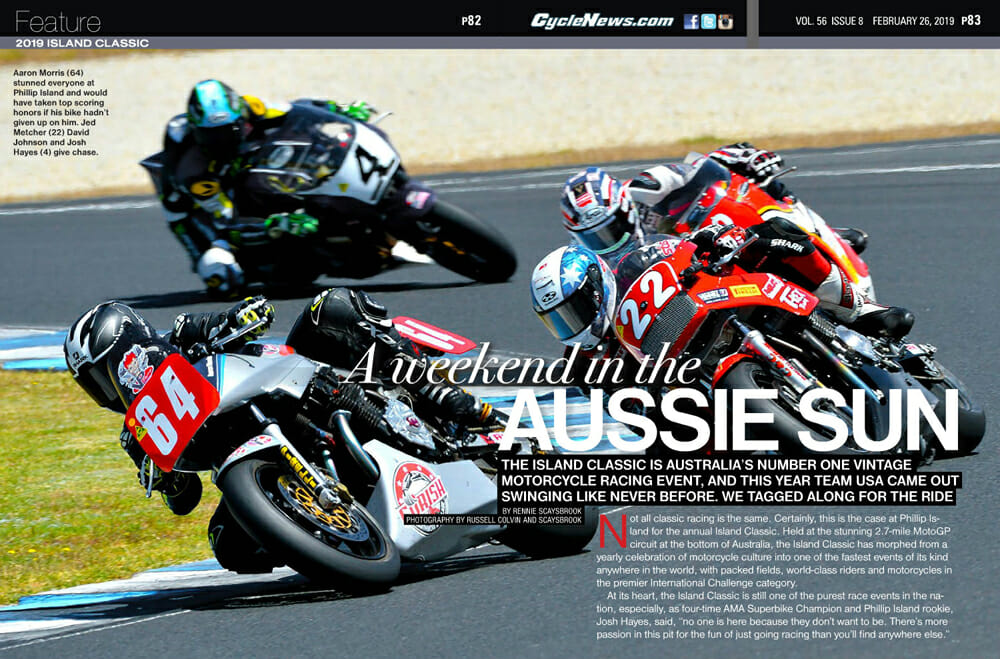
Photography by Russell Colvin and Rennie Scaysbrook
However, for 2019, Team UK was absent from the entry list. The combined expense of bringing such a heavy-hitting team and equipment halfway around the world, plus the Australian Government’s recently introduced ban on aviation fuel for non-aviation purposes (of which many of the UK and, indeed, Australian bikes were mapped on), put a temporary halt to more than two decades of British-Australian rivalry.
 An Australian resident and international superstar, DJ Carl Cox, is now seriously invested in southern-hemisphere motorcycle racing, sponsoring the New Zealand team as well as many other riders in different series across the globe.
An Australian resident and international superstar, DJ Carl Cox, is now seriously invested in southern-hemisphere motorcycle racing, sponsoring the New Zealand team as well as many other riders in different series across the globe.
Team UK’s absence from the 2019 event opened the door for Team USA to really step up to the plate and challenge home team Australia. In 2018, Team USA had its best-ever year, finishing third with its own MotoGP star, Colin Edwards, heading a side that also fielded Jake Zemke and Jason Pridmore.
This year, both Edwards and Zemke were absent from the entry list, but Team USA fielded its strongest lineup to date, with Josh Hayes, Larry Pegram, Steve Rapp, Michael Gilbert, Dale Quarterly and Mark Miller joining incumbent Pridmore and team captain Dave Crussell in the side.
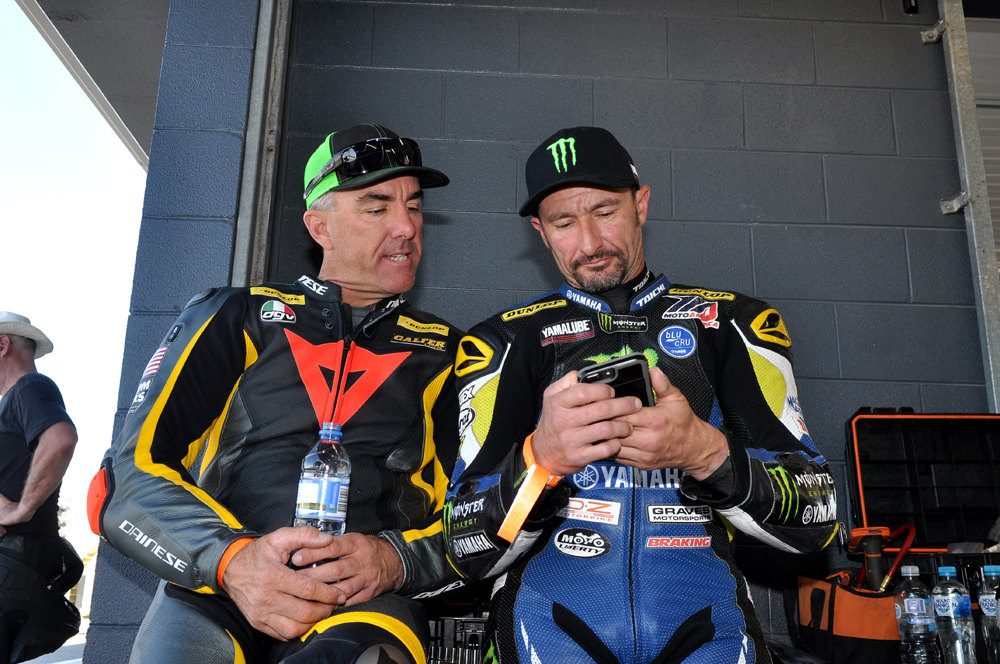 Old buddies with old bikes. Pridmore (left) was initially the fastest rider for the U.S., but Hayes picked up the baton after lap two of race one.
Old buddies with old bikes. Pridmore (left) was initially the fastest rider for the U.S., but Hayes picked up the baton after lap two of race one.
For the Australians, their team would be headed by former Endurance World Champion Steve Martin, three-time ASBK Champion Shawn Giles, Isle of Man TT stars David Johnson and Cameron Donald, former WorldSSP rider Jed Metcher and rookie Aaron Morris, who would stun the field with the opening two wins and by circulating in the 1:36s bracket—only six seconds slower than what MotoGP riders can do at Phillip Island—on a 35-year-old Suzuki Katana.
Team New Zealand was a mix of nationalities (Island Classic rules dictate you don’t need to race for your home country if you don’t want), with ASBK factory rider Alex Phillis from Australia, three-time British Superbike Champion John Reynolds, MCN Chief Road Tester Michael Neeves and Kiwi Isle of Man TT racer Jay Lawrence making up a smaller team than either the USA or Australia.
The machines raced by all three competing nations in the International Challenge were but silhouettes of their former selves. Indeed, in the case of many of the motorcycles from all three teams, they never existed in the first place.
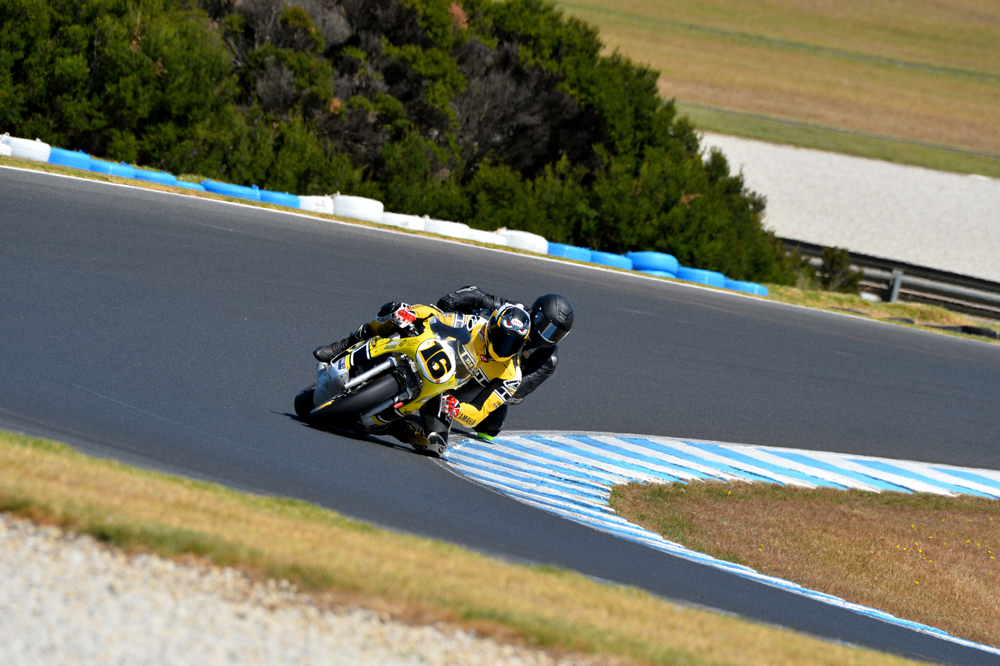 Former WorldSBK and AMA Superbike rider Marty Craggill is back on track these days racing a Yamaha TZ750.
Former WorldSBK and AMA Superbike rider Marty Craggill is back on track these days racing a Yamaha TZ750.
Rapp, Gilbert, Hayes, Pridmore, and Pegram, all rode Yamaha FJ 1100s bored out to 1250cc in Harris chassis, all of which never raced in the early 1980s. The rules for the International Challenge are based off the Period 5 Forgotten Era class and Period 6 Formula 750 and 1300 up to 1984, which includes such bikes as the Yamaha TZ750. The gray era stems from the fact that the Yamaha FJ1100 was commercially available back in 1984, as was the Harris XR69 chassis as it was being used with the GSX1100 Suzuki motor, so there’s no reason you shouldn’t be able to combine the two and be allowed to compete.
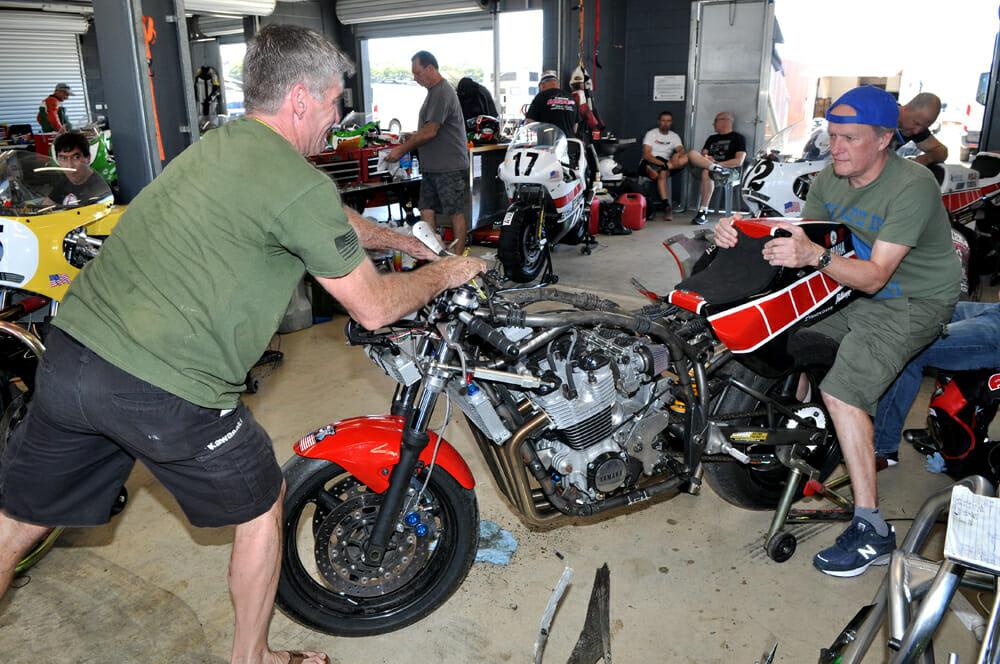 Steve Rapp suffered various engine dramas over the weekend and didn’t take part in the final race on Sunday.
Steve Rapp suffered various engine dramas over the weekend and didn’t take part in the final race on Sunday.
These Yamahas, Suzuki XR69s, Suzuki Katanas and Honda CB1100 motorcycles piloted by the likes of Hayes and Metcher look like racers from back then, but that’s about it. The motors are pumping out north of 160 horsepower at the tire—sometimes far more—cost an absolute fortune to build, and are lucky to last the race meeting. Most don’t get to the end of the four International Challenge races without some kind of serious mechanical drama, with the pits looking more like a wrecking yard with engine parts strewn all over the place than a modern race pit. At the really pointy end of the International Challenge, the money spent easily rivals those of top-level superbike teams.
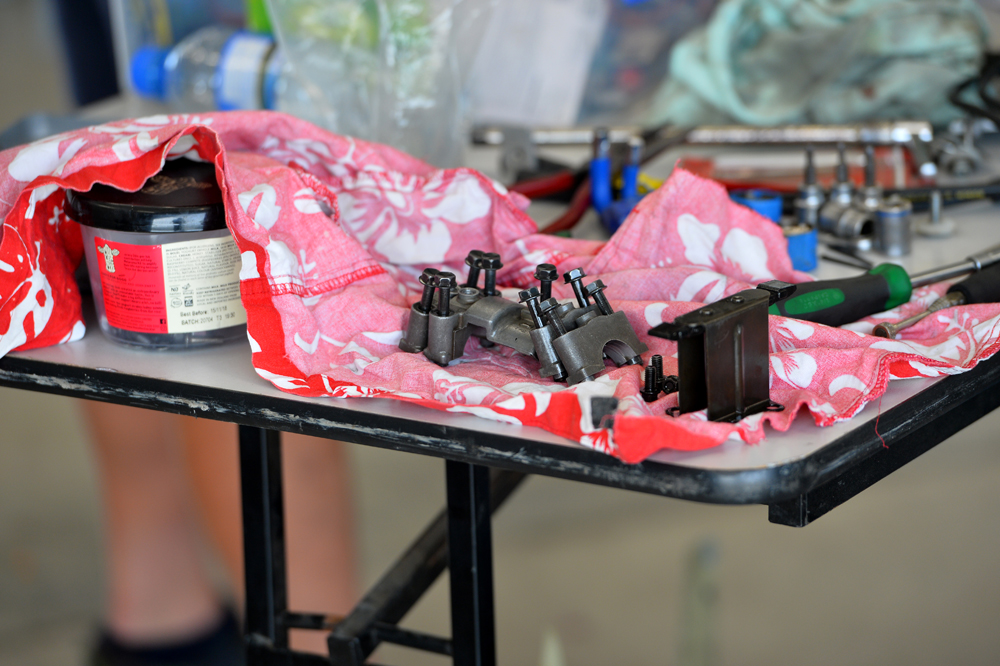 Motor parts on benches are common sight in the Island Classic pits.
Motor parts on benches are common sight in the Island Classic pits.
Yet despite their fragility, the racing from these beastly bikes is absolutely world class. Morris was the star of the event, taking two wins before his gearbox started jumping out of gear in race three, causing him to finish third and ninth in the final race and miss out on the Ken Wootton Perpetual Trophy for the highest-points scorer in the IC to race three winner Steve Martin by two points.
 The racing across all categories was impressive. The New Era Formula 750cc class saw a bevy of beautifully prepared Honda RC30s, like the one pictured above ridden by race winner Scott Campbell (29).
The racing across all categories was impressive. The New Era Formula 750cc class saw a bevy of beautifully prepared Honda RC30s, like the one pictured above ridden by race winner Scott Campbell (29).
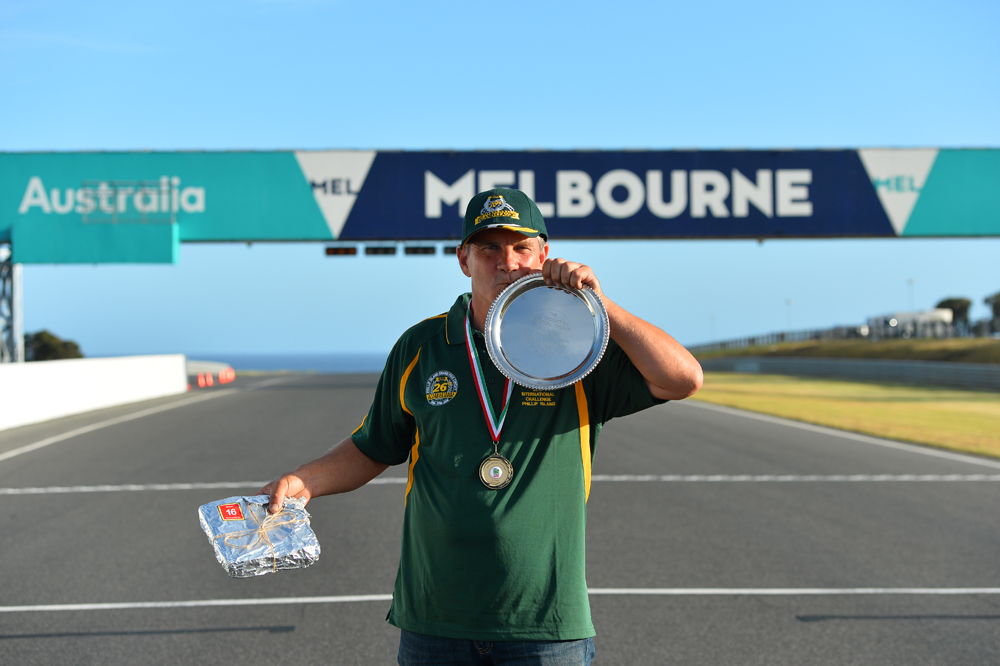 Ken Wootton Perpetual Trophy winner, Australia’s Steve Martin.
Ken Wootton Perpetual Trophy winner, Australia’s Steve Martin.
After many years of trying, Team USA scored their first race win when Josh Hayes finally had a bike under him that ran as it should in race four after swapping out the ignition system. The recently retired SBK champion Hayes showed he lost none of his speed, galloping away to a four-second win over Martin and Phillis.
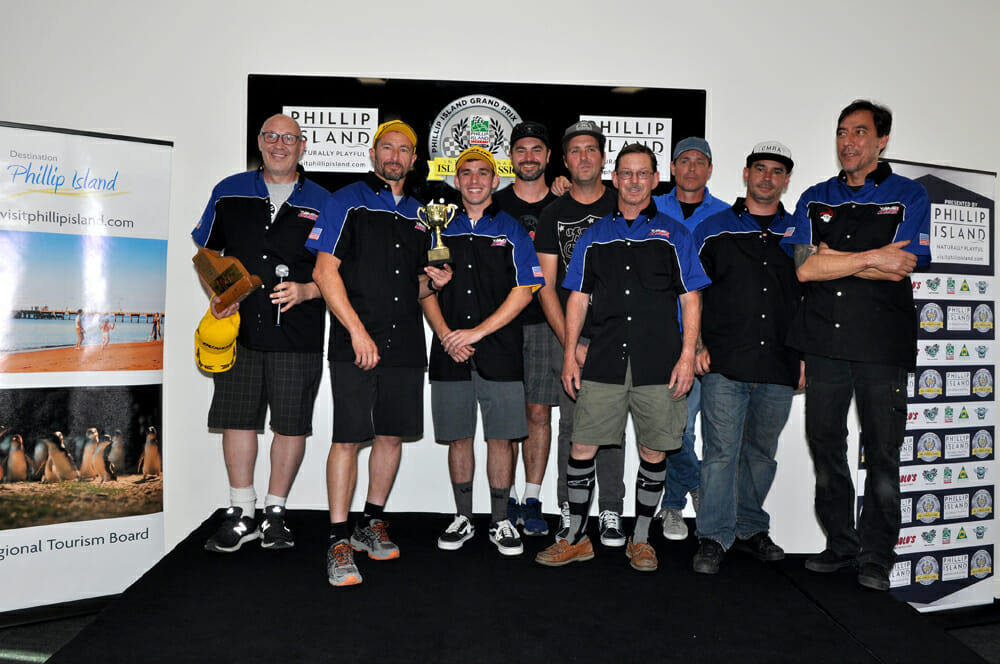 Team USA had their best ever year, with AMA Superbike legend Josh Hayes heading the point scorers.
Team USA had their best ever year, with AMA Superbike legend Josh Hayes heading the point scorers.
It proved to be a disaster of a meeting for Jason Pridmore. The Island Classic sophomore was on a mission at Phillip Island, determined to get his first win at the venue and qualified a strong second with a 1:37.341, 0.3 seconds down on Morris. While lying third on lap two of race one, Pridmore highsided in spectacular fashion exiting turn 11, going down in a hail of broken bodywork with Australia’s Beau Beaton on the Irving Vincent also getting caught up in the melee.
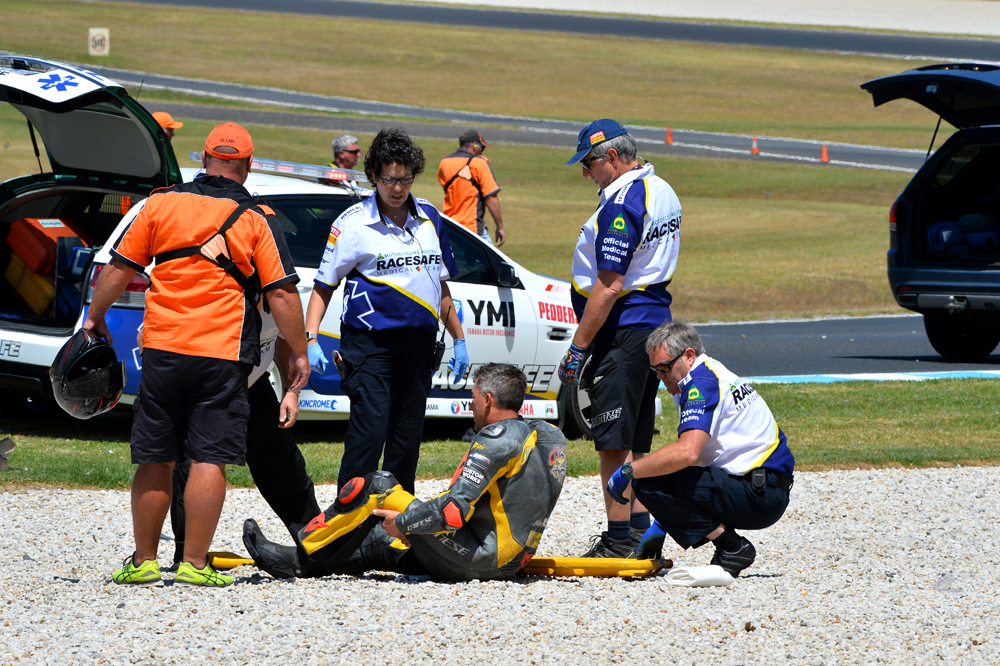 Jason Pridmore’s weekend comes to a crashing halt after one-and-three-quarters of a lap in race one. A broken leg was the result.
Jason Pridmore’s weekend comes to a crashing halt after one-and-three-quarters of a lap in race one. A broken leg was the result.
The outcome was serious, with a broken tibia and fibula and collarbone from Pridmore and multiple vertebrae fractures for Beaton, putting both out of action for the remainder meeting.
Hayes would take over Pridmore’s mantle as Team USA’s leader and would top score for the visitors with 141 points for third overall in the individual points tally. Next for the Americans was Larry Pegram in fifth on 130, Gilbert in sixth with 128, Miller in eighth on 121 and Barrett Long in 10th on 114.
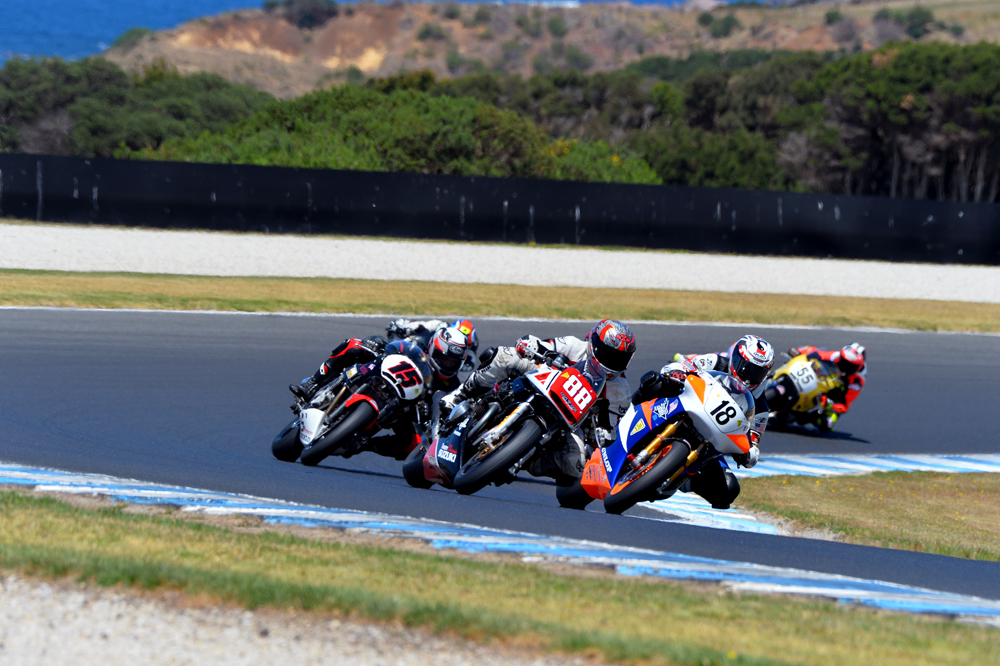 Mark Miller (18) rode like a demon, especially considering he hasn’t raced for two years.
Mark Miller (18) rode like a demon, especially considering he hasn’t raced for two years.
Team Australia took their second successive International Challenge Trophy on 676 points with Martin top scoring for the home side on 152 from Morris (150), Hayes and Shawn Giles, who tied with Hayes on 141 but was relegated to fourth after Hayes’ race four win. Team USA took a best-ever result of second on 634 with Team New Zealand third on 460.
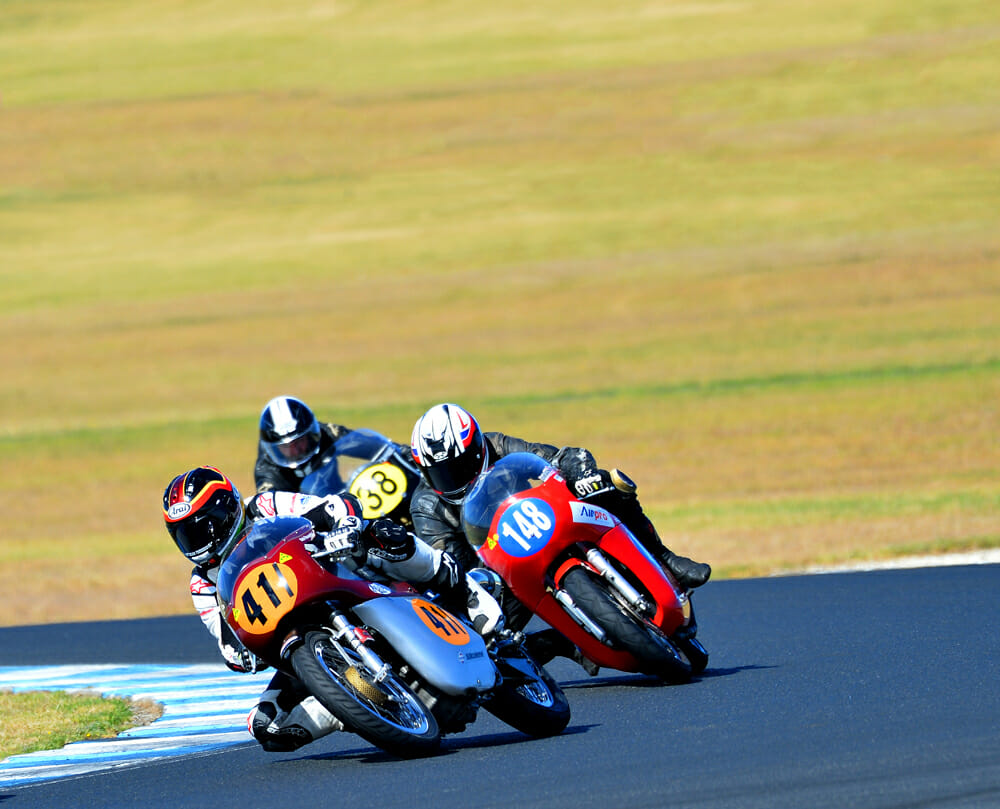 Team Cycle News gets a run on Bob Rosenthall’s beautiful Matchless G50. A third place in race four was a nice way to pay back the favor.
Team Cycle News gets a run on Bob Rosenthall’s beautiful Matchless G50. A third place in race four was a nice way to pay back the favor.
For Team USA captain, Dave Crussell, the meeting was a resounding success even though the win still eludes the United States.
“It’s been a pretty interesting weekend,” Crussell said. “This weekend started 364 days after last year’s event. We had a taste of running at the front, so we’ve been busy building bikes, getting good riders, and we’ve put together a really good team. We knew coming into this year the odds were stacked against us but we had good riders who could be at the pointy end—although there’s 12 Aussies who can be there, too. We needed every one of our guys to finish each race for the points, they needed half of them.
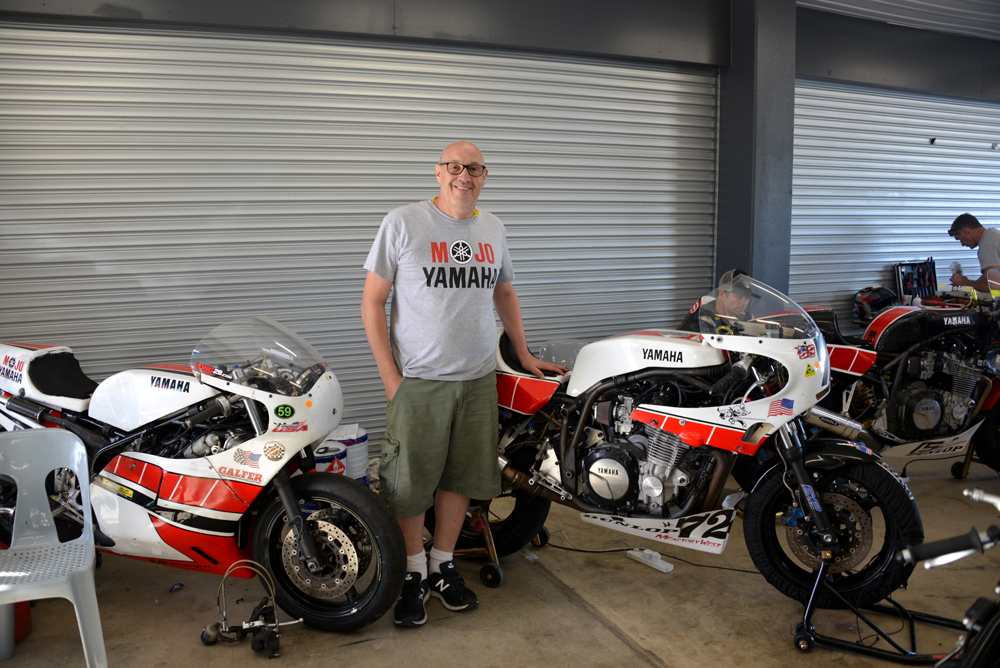 Team USA’s British-born captain Dave Crussell has been coming to the Phillip Island since the late 1990s and has no plans to stop racing the event just yet.
Team USA’s British-born captain Dave Crussell has been coming to the Phillip Island since the late 1990s and has no plans to stop racing the event just yet.
“Coming here we knew we could be in it for the win. The way this has progressed, it’s given us a little sniff of the team win. Having Hayes win the last race was great, so we know we can get up there next year.”
Video | 2019 International Island Classic
My Island Classic Racer
Classic racing is a fickle business, especially when you start talking Forgotten Era P5/International Challenge racing. Originally, I was due to ride a beautiful Suzuki GSX1000 XR69 entered by local construction business owner, Mick Neeson. However, after a series of mechanical gremlins, the brand-new motor cried enough after the fourth session of the first day and it looked like I’d just flown halfway around the world for six laps of Phillip Island. Not ideal.
Thankfully, I still had some allies in the PI pit and, within an hour, my old sponsor for 2014 in Steve Leembruggen at Old Gold Motorcycles gave me the same Suzuki Katana 1100 that I raced to second in the P5 Australian Championships in 2014, and my father’s close friend Bob Rosenthal lent me his Matchless G50 (that dad built) to race in the Classic 500 class. You meet the nicest people racing motorcycles.
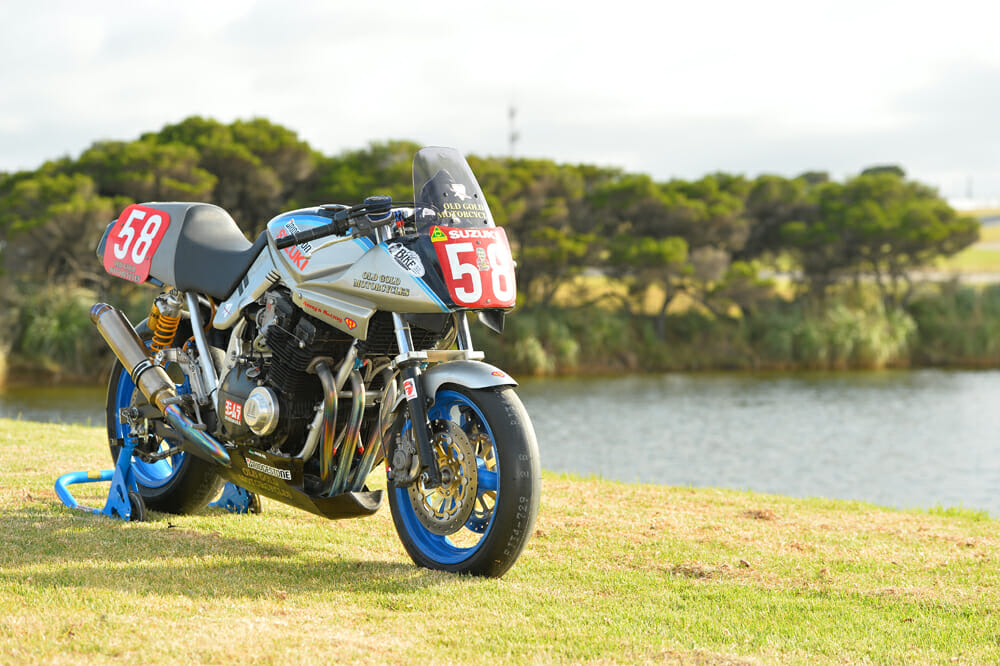 What a beast! We had a blast on the big Suzuki.
What a beast! We had a blast on the big Suzuki.
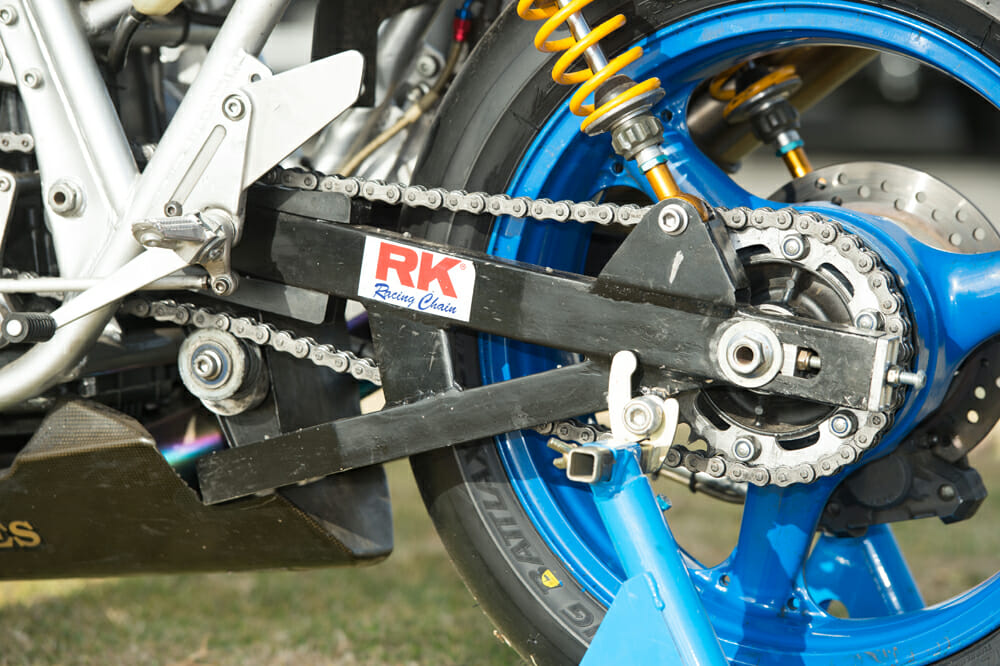 Braced swingarm has a lot of power to handle and get to the ground.
Braced swingarm has a lot of power to handle and get to the ground.
This Suzuki Katana is owned by Old Gold Motorcycles, but it isn’t just any Katana. Based off a 1982 1100, the motor has been bored out to a chunky 1290cc with 145 horsepower, but it’s still about 30 horsepower down on what the bikes like David Johnson’s XR69 and Shawn Giles’ Katana are producing.
The Kat runs 37mm Keihin carburetors, has a welded crank, straight-cut gears, undercut gearbox, heavy-duty race clutch, a full titanium race exhaust system, and a Japanese Uotani ignition system.
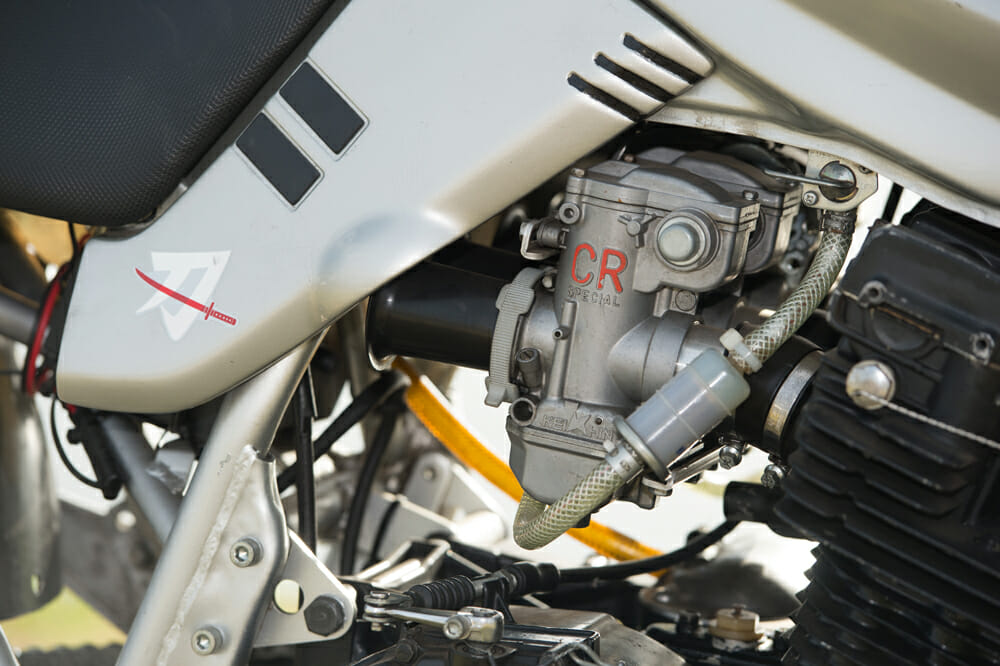 Keihin 37mm carbs were used on the Kat, although many others in the pits were running 38 or 39mm units.
Keihin 37mm carbs were used on the Kat, although many others in the pits were running 38 or 39mm units.
As for the chassis, the bike was pretty tired with old Ӧhlins shocks at the rear and a cartridge fork kit. Old Gold also removed the standard swingarm and used a Macintosh unit and braced the frame, and we ran Lockheed AP four-piston front brakes.
A special thanks to Bridgestone Australia, who helped us out with the V01 slick tires front and rear, with Bridgestone USA also chipping in with a few set-up ideas on the phone from their head offices in Nashville.
The Katana ran flawlessly for nearly the entire race meeting, but a telltale puff of smoke on the final lap of the third race made for an early end to our International Challenge as part of Team USA.
 The front AP brakes are surprisingly good, although they lacked feel at the lever.
The front AP brakes are surprisingly good, although they lacked feel at the lever.
We still have not pulled the motor apart, but it didn’t lose power as it smoked, so hopefully the damage isn’t too bad.
Thanks to Steve at Old Gold Motorcycles in Sydney for loaning us this excellent machine and saving Cycle News’ weekend. It’s certainly a beast to ride—long and slow steering—but still buckets of fun.CN